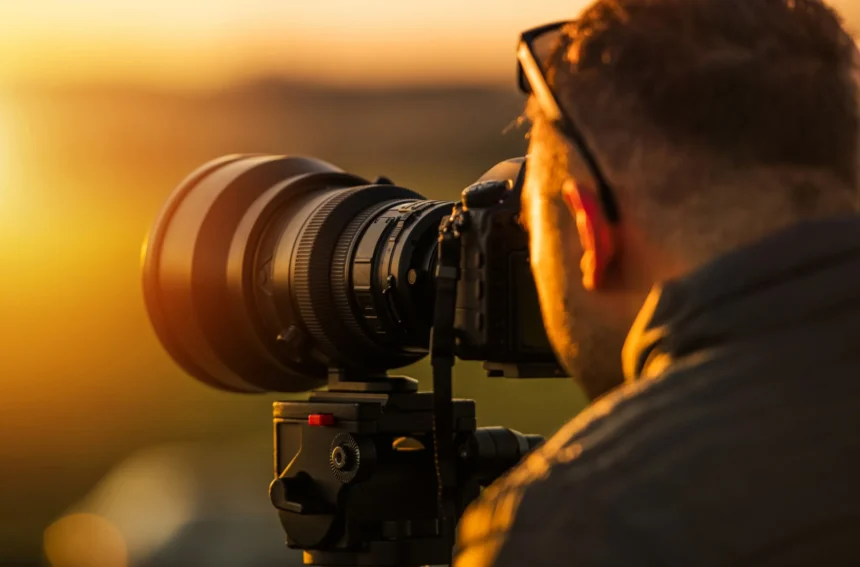Lens flare, while often considered a flaw, can add an artistic and dramatic effect to photographs when used intentionally. In the context of modern photography tools like Photeeq, mastering lens flare can elevate your images to new levels of sophistication. This article will explore what lens flare is, how it impacts photography, and how you can leverage Photeeq to either eliminate or creatively use lens flare for stunning results.
Understanding Photeeq Lens Flare
Lens flare occurs when non-image-forming light enters the lens, scattering within it and creating a visual artifact in your photograph. This is often caused by direct sunlight or other intense light sources. While traditional photography treats lens flare as a defect, modern photographers and tools like Photeeq have embraced it as a creative element.
Photeeq, a popular editing platform, offers advanced features to help photographers handle lens flare. Whether you want to remove unwanted flares or enhance them to give your photos a cinematic look, Photeeq provides precise controls to achieve your goals. Understanding the science behind lens flare and how Photeeq interacts with this phenomenon is the first step toward mastering it.
Types of Lens Flare
Before diving into Photeeq’s specific tools, it’s crucial to recognize the two main types of lens flare:
- Ghosting Flare: This is characterized by multiple shapes or reflections within the image, often caused by light bouncing between lens elements. These shapes are typically circular or hexagonal, depending on the aperture blades of the lens.
- Veiling Flare: This results in a washed-out appearance, reducing contrast and saturating the colors of your image. It’s often more subtle than ghosting but can significantly impact the overall quality of your photo.
Photeeq’s advanced tools can address both types, offering tailored solutions to enhance or reduce these effects based on your creative needs.
Causes of Lens Flare in Photography
To effectively manage lens flare, it’s essential to understand its causes. Common triggers include:
- Shooting Against Light Sources: Direct sunlight or artificial lights aimed at the lens often create flares. This is especially common in outdoor photography during golden hour.
- Lens Quality and Coating: Lower-quality lenses are more prone to flare due to insufficient anti-reflective coatings. High-end lenses usually have specialized coatings that minimize flare.
- Lens Design: Wide-angle lenses and those with more glass elements are more susceptible to flare because of the increased surface area for light to scatter.
By knowing these causes, you can make informed decisions while shooting and later use Photeeq to fine-tune your results.
Using Photeeq to Remove Lens Flare
Not all lens flares add beauty to a photo. Unwanted artifacts can distract viewers and dilute the image’s impact. Photeeq offers several tools to address these issues effectively:
Spot Healing Tools
Photeeq’s spot healing feature is excellent for removing ghosting flares. With just a few clicks, you can select the unwanted artifacts and let Photeeq’s algorithms seamlessly blend them with the surrounding pixels. This tool is particularly effective for smaller, isolated flares.
Gradient Adjustments
Veiling flare can reduce contrast and dull your image. Photeeq’s gradient adjustment tools allow you to selectively enhance contrast and saturation in affected areas, restoring vibrancy without compromising the natural look of the photo.
Custom Brush Tools
For more localized corrections, Photeeq provides customizable brush tools. These allow you to paint over specific areas with fine control, ensuring that the flare removal looks natural and blends harmoniously with the rest of the image.
Enhancing Photos with Photeeq Lens Flare Effects
On the flip side, lens flare can be a powerful artistic tool when used deliberately. Photeeq offers creative options to add or enhance lens flare, enabling photographers to infuse their images with warmth, drama, or nostalgia. Here’s how you can achieve this:
Adding Artificial Lens Flare
Photeeq includes a library of lens flare overlays that can be applied to your images. These overlays mimic natural flare patterns and can be adjusted for size, intensity, and color. Whether you want a subtle glow or a dramatic burst of light, these overlays give you full creative control.
Adjusting Flare Position
With Photeeq, you can manually position the lens flare to align perfectly with the light source in your photo. This ensures that the effect looks authentic and enhances the composition rather than appearing as a random addition.
Color Grading for Flare Effects
Photeeq’s color grading tools allow you to harmonize the flare’s colors with the rest of the image. For example, you can adjust the flare to match the warm tones of a sunset or the cool hues of a winter scene, creating a cohesive and visually appealing image.
Best Practices for Avoiding Unwanted Lens Flare
While Photeeq provides excellent tools for handling lens flare, it’s always better to minimize issues during the shooting process. Here are some tips to avoid unwanted flares:
- Use a Lens Hood: A lens hood blocks stray light from entering the lens, reducing the likelihood of flare.
- Change Your Angle: Slightly adjusting your shooting angle can often eliminate flare without compromising your composition.
- Block the Light Source: Using your hand, a reflector, or other objects to shield the lens from direct light can significantly reduce flare.
- Invest in Quality Lenses: High-quality lenses with advanced coatings are less prone to flare and often produce more pleasing effects when flares do occur.
When to Embrace Lens Flare
Lens flare isn’t always a problem. It can add character and emotional depth to an image, particularly in the following scenarios:
- Golden Hour Photography: The warm, soft light of the golden hour creates beautiful flares that enhance the romantic and nostalgic feel of a photo.
- Cinematic Shots: Flare can add drama and a sense of realism, often seen in movie scenes.
- Backlit Portraits: Subtle flare can create a dreamy, ethereal atmosphere, perfect for portrait photography.
Photeeq’s tools allow you to fine-tune these artistic flares, ensuring that they complement your composition rather than overpowering it.
Conclusion
Mastering lens flare, whether to eliminate it or use it creatively, is an essential skill for photographers. With Photeeq, you have access to advanced tools that simplify this process, enabling you to produce stunning images with minimal effort. By understanding the science of lens flare, utilizing Photeeq’s features, and following best practices, you can transform your photography and stand out in a crowded field.
Whether you’re a professional photographer or an enthusiastic hobbyist, embracing the potential of Photeeq lens flare will open new avenues for creativity. From removing distractions to crafting cinematic masterpieces, the possibilities are endless. So, grab your camera, explore the world of lens flare, and let Photeeq help you achieve breathtaking results.
FAQs
What is lens flare, and how does it affect photographs?
Lens flare occurs when non-image-forming light enters the camera lens, scattering inside and creating visual artifacts. It can either enhance or detract from the photograph depending on how it is managed.
How does Photeeq help in managing lens flare?
Photeeq offers advanced tools like spot healing, gradient adjustments, and custom brushes to remove unwanted flares. It also provides creative overlays and controls for enhancing artistic flares.
What types of lens flare can Photeeq address?
Photeeq is effective for handling both ghosting flare, which creates shapes in the image, and veiling flare, which reduces contrast and saturation.
Can lens flare be used artistically in photography?
Yes, lens flare can add a dramatic, cinematic, or nostalgic effect to photos. Photeeq allows photographers to enhance and position flares creatively for artistic purposes.
What are some best practices for avoiding unwanted lens flare during shooting?
Using a lens hood, changing your shooting angle, blocking direct light, and investing in quality lenses with anti-reflective coatings can help minimize unwanted lens flare.












